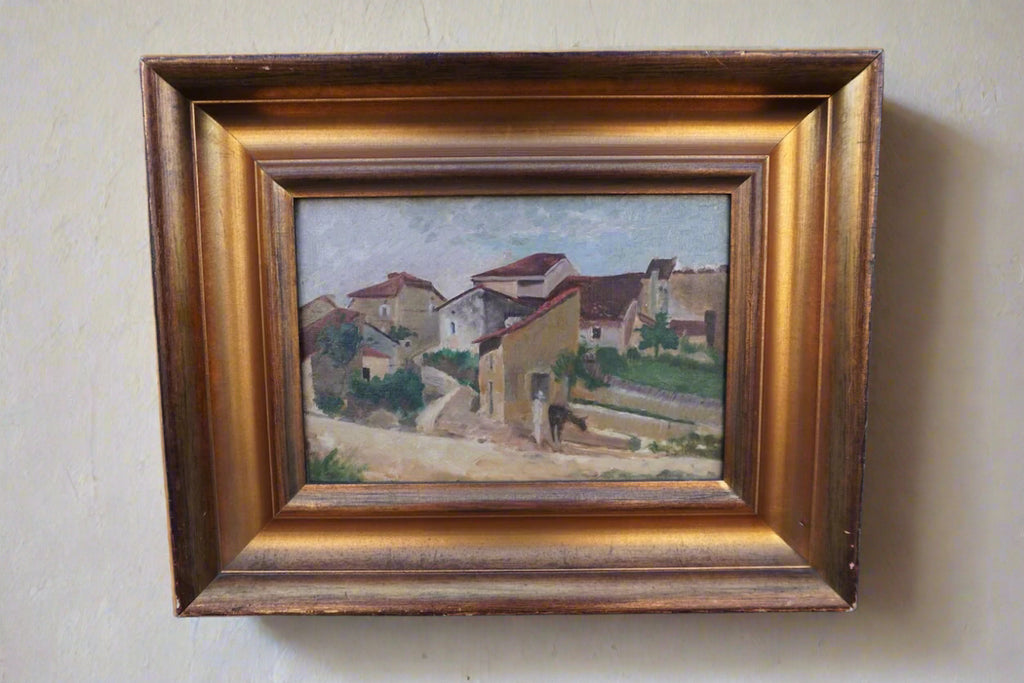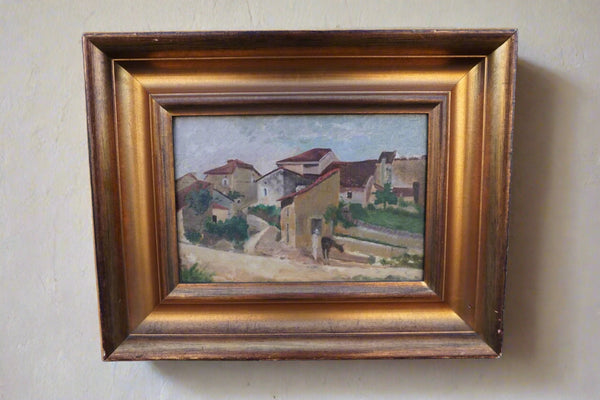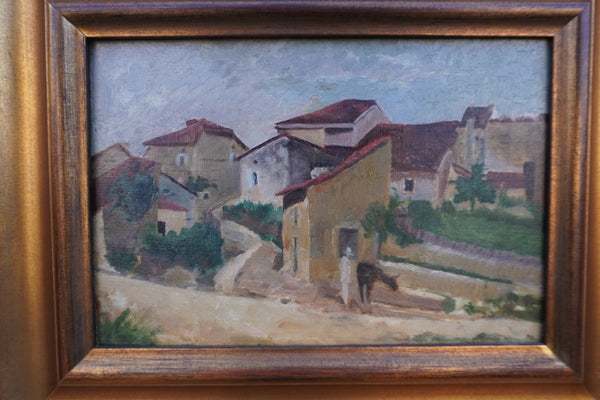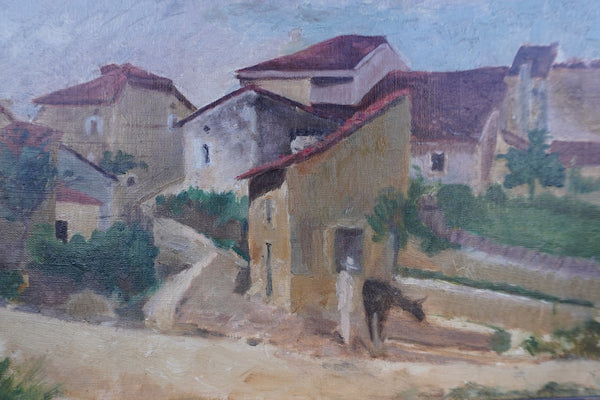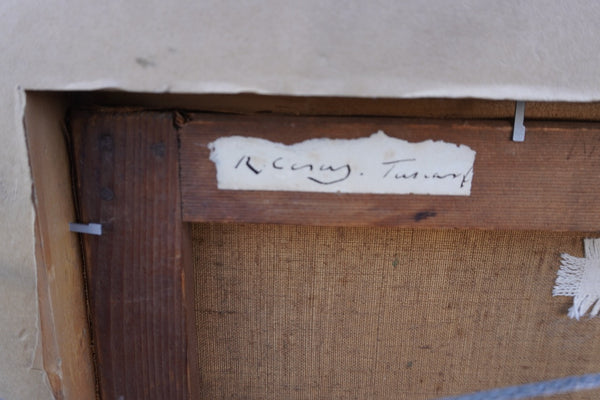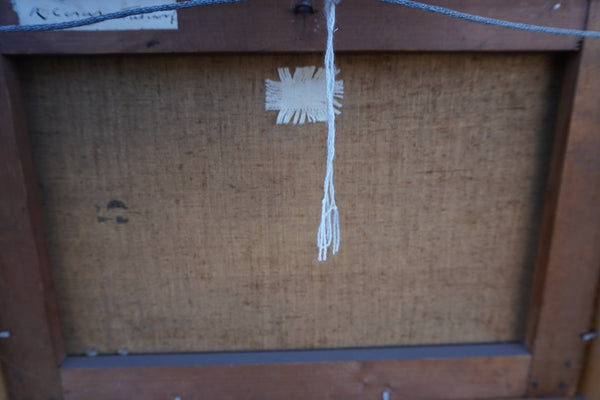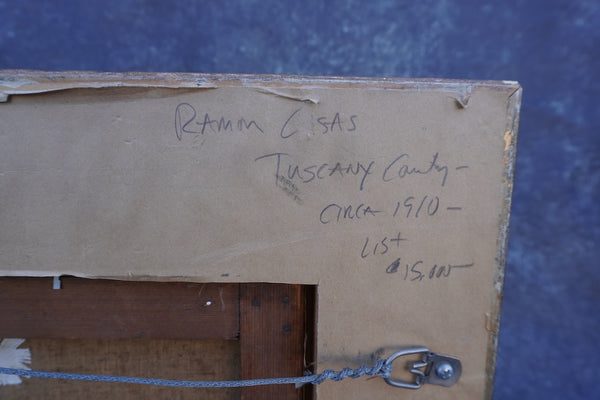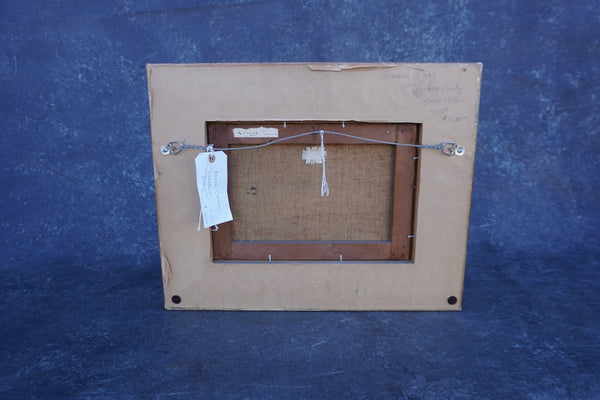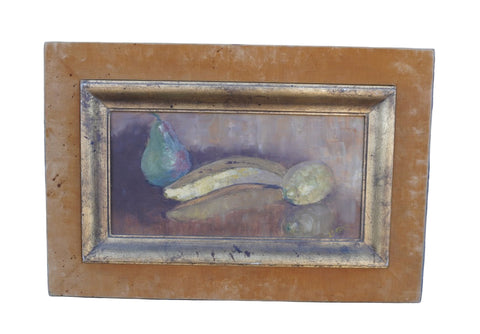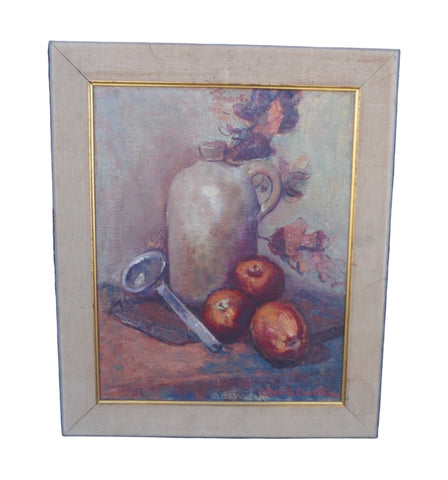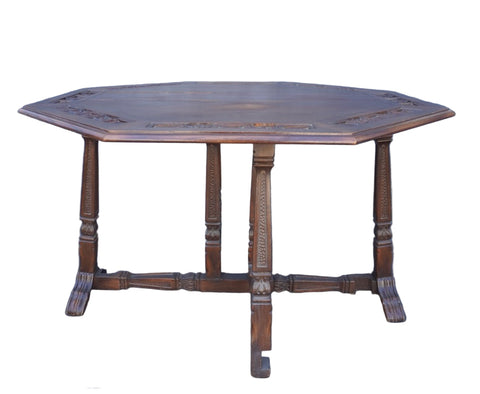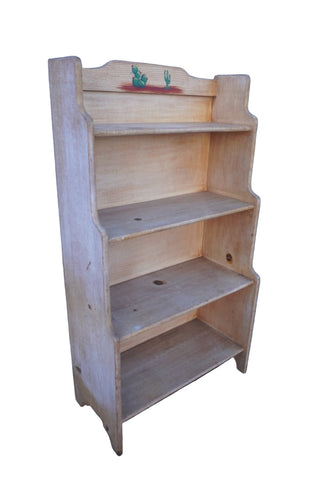Ramon Casas - Spanish Village Scene - Oil on Canvas P3344
In the 1890s, Casas was one of many artists exercising their artistic talents around the Moulin de la Galette in Paris. Casas and his friend, and fellow artist, Santiago Rusinol, constructed several exhibitions back in their native city of Barcelona, that exhibited their first-hand experiences of the French culture and art. Over time, these exhibitions quickly evolved into a center of progressive painting scenes within the Modernist movement. Casas became a leading figure in the revival of Catalan culture, and was one of the first Spanish artists to introduce French Modernism to Spain in the late nineteenth-century.
Casas was born in Barcelona. His father had made a fortune in Matanzas, Cuba; his mother was from a well-off Catalan family. In 1877 he abandoned the regular course of schooling to study art in the studio of Joan Vicens. In 1881, still in his teens, he was a co-founder of the magazine L'Avenç; the 9 October 1881 issue included his sketch of the cloister of Sant Benet in Bages. That same month, accompanied by his cousin Miquel Carbó i Carbó, a medical student, he began his first stay in Paris, where he studied that winter at the Carolus Duran Academy and later at the Gervex Academy, and functioned as a Paris correspondent for L'Avenç.
The next year he had a piece exhibited in Barcelona at the Sala Parés, and in 1883 in Paris the Salon des Champs Elysées exhibited his portrait of himself dressed as a flamenco dancer; the piece won him an invitation as a member of the salon of the Societé d'artistes françaises. The next few years he continued to paint and travel, spending most autumns and winters in Paris and the rest of the year in Spain, mostly in Barcelona but also in Madrid and Granada; his 1886 painting of the crowd at the Madrid bullfighting ring was to be the first of many highly detailed paintings of crowds. That year he survived tuberculosis, and convalesced for the winter in Barcelona. Among the artists he met in this period of his life, and who influenced him, were Laureà Barrau, Santiago Rusiñol, Eugène Carrière, Pierre Puvis de Chavannes and Ignacio Zuloaga.
Casas and Rusiñol traveled through Catalonia in 1889, and collaborated on a short book Por Cataluña (desde mi carro), with text by Rusiñol and illustrations by Casas. Returning together to Paris, they lived together at the Moulin de la Galette in Montmartre, along with painter and art critic Miquel Utrillo and the sketch artist Ramon Canudas. Rusiñol chronicled these times in as series of articles "Desde el Molino" ("From the Mill") for La Vanguardia; again Casas illustrated. Casas became an associate of the Societé d'artistes françaises, allowing him to exhibit two works annually at their salon without having to pass through jury competition.
With Rusiñol and with sculptor Enric Clarasó he exhibited at Sala Parés in 1890; his work from this period, such as Plen Air and the Bal du Moulin de la Galette lies somewhere between an academic style and that of the French impressionists. The style that would become known as modernisme had not yet fully come together, but the key people were beginning to know one another, and successful Catalan artists were increasingly coming to identify themselves with Barcelona as much as with Paris.
His fame continued to spread through Europe and beyond as he exhibited successfully in Madrid (1892, 1894), Berlin (1891, 1896) and at the World Columbian Exposition in Chicago (1893); meanwhile the bohemian circle that included Casas and Rusiñol began with greater frequency to organize exhibitions of their own in Barcelona and Sitges. With this increasing activity in Catalonia, he settled more in Barcelona, but continued to travel to Paris for the annual Salons.
The emerging modernist art world gained a center with the opening of Els Quatre Gats, a bar modeled on Le Chat Noir in Paris. Casas largely financed this bar on the ground floor of Casa Martí, a building by Architect Josep Puig i Cadafalch in Montsió Street near the center of Barcelona; it opened in June 1897 and lasted for six years (and was later reconstructed in 1978). His partners in the enterprise were Pere Romeu, who largely played host to the bar, as well as Rusiñol and Miquel Utrillo. The bar hosted tertulias and revolving art exhibits, including one of the first one-man shows by Pablo Picasso; the most prominent piece in its permanent collection was a lighthearted Casas self-portrait, depicting him smoking a pipe while pedaling a tandem bicycle with Romeu as his stoker. The original of the painting - or most of it: nearly a third of the canvas was cut away by an intervening owner - is now in Barcelona's Museu Nacional d'Art de Catalunya (MNAC); a creditable reproduction resides in the revived Els Quatre Gats.
Like Le Chat Noir, Els Quatre Gats attempted its own literary and artistic magazine, to which Casas was a major contributor. That was short-lived, but was soon followed by Pèl and Ploma, which would slightly outlast the bar itself, and Forma (1904-1908), to which Casas also contributed. Pèl and Ploma sponsored several prominent art exhibitions, including Casas' own well-received first solo show (1899 at Sala Parés), which brought together a retrospective of his oil paintings as well as a set of charcoal sketches of contemporary figures prominent in Barcelona's cultural life.
While his painting career continued successfully through this period, as part owner of a bar Casas engaged heavily in graphic design, adopting the art nouveau style that would come to define modernism. He designed posters for the café, many of which depicted Romeu's gaunt visage. He also executed a series of advertisements for Codorniu, a brand of cava (or, as its ads of the time claimed, champagne) and anisette. Over the next decade, he would design poster ads for everything from cigarette papers to the Enciclopèdia Espasa.
For the 1900 Exposition Universelle (1900) in Paris, the Spanish committee chose two of Casas' full-length oil portraits: an 1891 portrait of Eric Satie and an 1895 portrait of Casas' sister Elisa. His 1894 Garrote Vil -a portrayal of an execution- won a major prize in Munich in 1901; his work was shown not only in the major capitals of Europe, but as far away as Buenos Aires, Argentina. In 1902, twelve of his canvasses were installed permanently in the rotunda of the Cercle de Liceu, the exclusive private club associated with Barcelona's famous opera house.
In 1903 he became a full Societaire of the Salon du Champ de Mars in Paris, which would have allowed him to exhibit there annually, but in fact he only exhibited there for two more years. In 1903, his piece for the salon was one that had originally been called La Carga (The Charge), which he retitled Barcelona 1902 in reference to a recent general strike, although in fact the painting, which shows Guardia Civil routing a crowd, had been executed at least two years before that strike. In 1904, the same piece won first prize at the General Exposition in Madrid.
During a 1904 sojourn in Madrid, he produced a series of sketches of the Madrid intelligentsia, and befriended painters Eliseo Meifrén and Joaquín Sorolla, as well as Agustí Querol Subirats, official sculptor to the Spanish government. In Querol's studio, he executed an equestrian portrait of the king, Alfonso XIII, which was soon purchased by the American collector Charles Deering, who, over the next few years would commission or purchase several of Casas paintings.
In 1916, Casas and Deering traveled to Tamarit in Catalonia. Deering purchased the entire village, and placed Casas in charge of the project of restoring it. Several years later, in 1924, he would return to Tamarit to paint numerous landscapes.
Also in 1916, Deering purchased a house in Sitges, known as Can Xicarrons (now a museum), and the magazine Vell i Nou dedicated an issue to Casas.
Up until this time, Casas had kept his distance from the battles of World War I, but in 1918 he visited the front; he painted a self-portrait wearing a military cape.
Casas, Rusiñol and Clarasó resumed regular annual joint exhibitions at Sala Parés in 1921; these continued until Rusiñol's death in 1931. However, that year he had a falling out with his friend Utrillo over Maricel Casas's close association with Deering; the breach was never healed.
In 1922, Casa finally married Júlia Peraire, and in 1924 she came along with him on a trip to the United States, during which he once again made portraits of the rich and famous.
By the 1920s, Casas had fallen far away from the avant-gard tendencies of his youth. If anything, his work from this period looks like it came from an academic painter of an earlier time than his work of the 1890s. He continued painting landscapes and portraits, as well as anti-tuberculosis posters and the like, but by the time of his death in 1932, shortly after the emergence of the Second Spanish Republic, he was already more a figure of the past than the present.
Source:
"Ramon Casas i Carbo-Catalan Modernism and Avant-Garde Movements", Tutt'Art: A Meeting Place for Artists, http://www.tuttartpitturasculturapoesiamusica.com/2014/08/Ramon-Casas-Carbo.html
Biography from Setdart
An outstanding painter and draughtsman, Casas began painting as a disciple of Joan Vicens. In 1881 he made his first trip to Paris, where he completed his training at the Carolus Duran and Gervex academies. The following year he participated for the first time in an exhibition at the Sala Parés in Barcelona, and in 1883 he presented a self-portrait at the Salon des Champs Elysées in Paris, which earned him an invitation to become a member of the Salon de la Societé d'Artistes Françaises. He spent the following years traveling and painting between Paris, Barcelona, Madrid and Granada. In 1886, suffering from tuberculosis, he settled in Barcelona to recover. There he came into contact with Santiago Rusiñol, Eugène Carrière and Ignacio Zuloaga. After a trip through Catalonia with Rusiñol in 1889, Casas returned to Paris with his friend. The following year he took part in a group exhibition at the Sala Parés, together with Rusiñol and Clarasó, and in fact the three of them continued to hold joint exhibitions there until Rusiñol's death in 1931. His works at this time are halfway between academicism and French impressionism, in a sort of germ of what would later become Catalan modernism. His fame continued to spread throughout Europe, and he held successful exhibitions in Madrid and Berlin, as well as participating in the Chicago World's Fair of 1893. Casas settled permanently in Barcelona, immersed in the modernist environment, although he continued to travel to Paris for the annual salons. He financed the premises that would become a point of reference for the modernists, the café Els Quatre Gats, inaugurated in 1897. Two years later he organized his first individual exhibition at the Sala Parés. While his fame as a painter grew, Casas began to work as a graphic designer, adopting the Art Nouveau style that came to define Catalan Modernisme. In the following years his successes followed: he presented two works at the Universal Exhibition in Paris in 1900, won a prize in Munich in 1901, several of his works were included in the permanent exhibition of the Círculo del Liceo, had several international exhibitions and, in 1904, won first prize at the General Exhibition in Madrid. He is represented in the Prado Museum, the National Museum of Art of Catalonia, the Reina Sofia National Museum, the Thyssen-Bornemisza Museum, the Museum of Montserrat, the Cau Ferrat in Sitges, the Camón Aznar Museum in Zaragoza and the Contemporary Art Museums of Barcelona and Seville, among many others.

